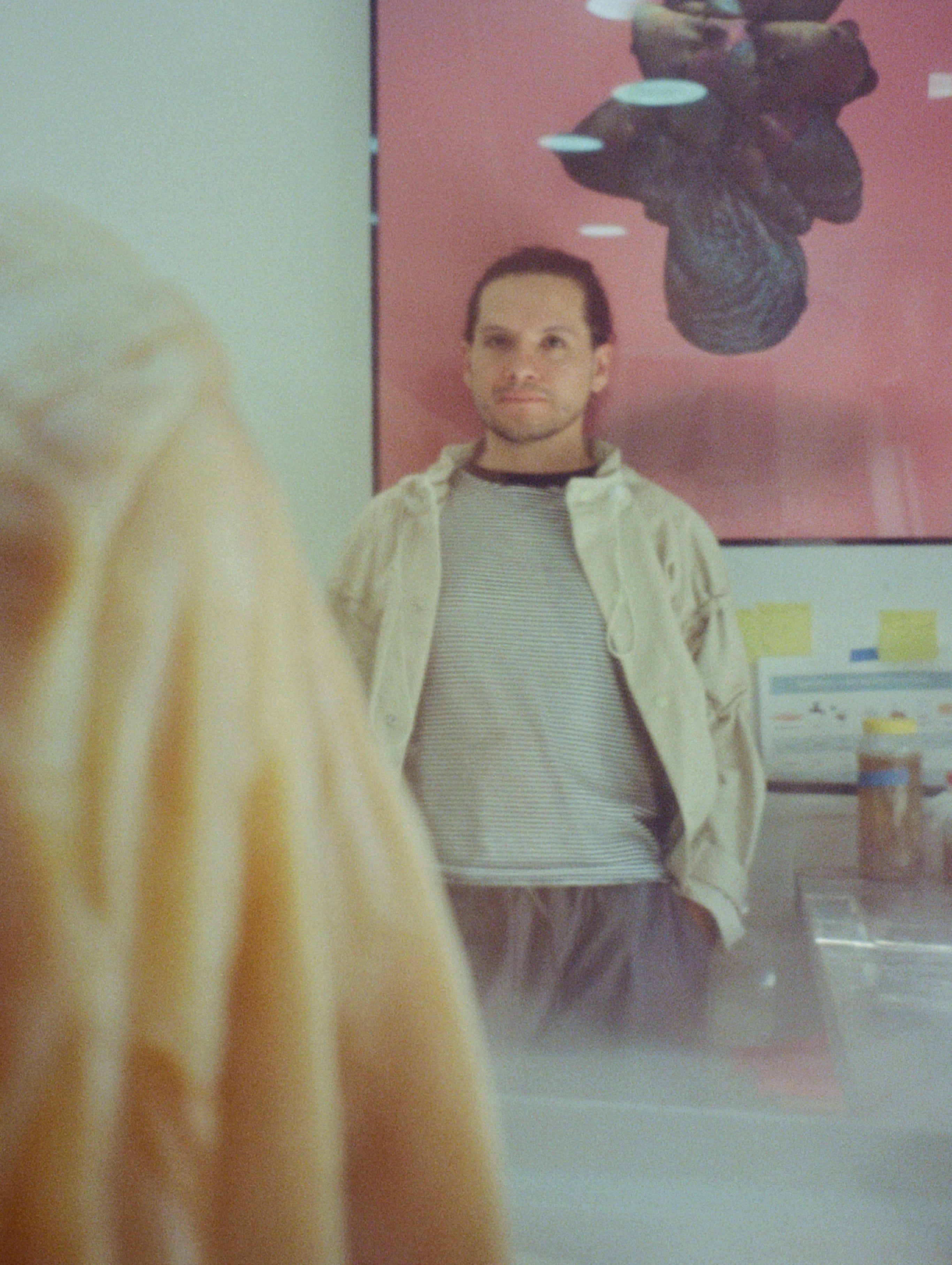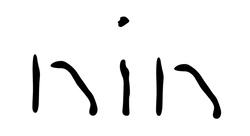
Every time we see each other we seem to go deep straight away! Its been a natural development of trust and vulnerability that seems to be there awaiting us each time we meet.
Hello friend!
We spoke before and during lunch about the light and the dark and how we can swing between the two. How do these opposites manifest in your life and how do you manage them?
I have mild bipolar disorder, so both light and dark tendencies are pretty much integrated in my daily and personal life. I can go from Apocalyptic visions of the future to Utopian scenarios where somehow emancipation and harmony with all that surrounds us is/will be possible. I try not to attach myself to any particular mood or belief, but to flow and allow myself to feel whatever is manifesting in the present moment and to work with that as a material for my art practice.
We spoke about your meditation practice, can you share what that practice looks like to you? I remember the mountain analogy that your teacher had shared with you in the past, can you share that with us?
I’ve been a Zen Buddhism practitioner for 10 years now, and I took the Buddhist precepts five years ago at the Buddhist Society for Compassionate Wisdom. Apart from attending the Zen temple in Mexico City on a regular basis, I try to follow the precepts and find a balance that feels comfortable with me. Light projects darkness, and both are essential to grasp a bit of understanding!
My master and founder of the temple, Samu Sunim (may he rest in peace), had this wonderful metaphor about meditation: He said that when you practice zazen, you become like a mountain: Grounded, stable, unshakable; and that when thoughts inevitably start to appear in your mind, you should consider them as clouds. They will come and stay for a little while, and then they will fade away. And just like a mountain, you will stay grounded, stable, unshakable, living in the here and now, without judging or going after the thoughts.
When we were in your studio, a main piece I was drawn to was made up of solid objects and a biodegradable fibre, stabilised inside of a humidity box. Can you share with us a bit about that piece and how that piece has been developing?
That piece is part of a project that I’ve been working on for the last three years under the name of Apofenia (the unthinkable fossil). Working with digital and organic processes, I’ve been experimenting with these things I’ve been calling ‘post-objects’. Imagine a future where all the objects of the industrial and post-industrial era no longer serve their original purpose, either because humans went extinct, or they found new ways of creating things. What will happen then to all these objects? My premise is that they will enter into a symbiotic relationship with all other entities existing in the world, attaining eventually a sort of self-defined existence, away from human considerations. The piece you refer to is a physical post-object, based on an assemblage of man-made things and covered in a layer of bacterial cellulose that is alive. The work changes over time depending on climate conditions, effectively fulfilling a life cycle, so in a sense is a real organism that in turn creates the conditions for a micro-ecosystem to emerge, as it eventually becomes the host for other organisms.
What led you to start making art?
First time I grabbed my father’s pencils! Seriously, since very young I was utterly fascinated by images, sounds; everything that I considered strange and mysterious, anything that sparked my imagination and took me to other worlds, to that unspeakable and ungraspable realities that are very very real. Later in life I began my professional career as a commercial Illustrator but became fed up with it and having to deal with clients and boring commissions even if I loved making sf (sci fi) and fantasy illustrations. But I also had a great commitment and concern to social and political affairs, alongside very personal feelings and beliefs I wanted to express, so I decided to take a leap of faith and began making my own work that’s been slowly developing during these 10ish years.
When I see your work I always feel the story that is behind it, the work has only happened because of the chapters behind it. Can you share a bit the history about the previous themes which led you to what you are exploring today?
I think I reached a pivotal point in my career when I decided to move to London in 2013, where I spent almost five years honing my output and finding a path to follow. And I think that path is the Future (with a capital F). I found out that working from a science-fiction/speculative-fiction approach allowed me to combine all my different interests in a kind of work that is (I’d like to think) very political as well as wildly imaginative. From then on, it’s been a series of works interconnected by this principle but that have changed unrestrained of themes, mediums or aesthetic considerations. In that sense I consider myself as a media artist, as it’s not that easy to pinpoint a single line of production, style or topic in my work, although there’s this overarching idea of time. The future, the past, the otherness.
What I’ve found very interesting is that I’ve been working based on narrative principles – coming up with fictional scenarios and timelines where I insert the pieces – but slowly and unconsciously there’s been a shift to material rather than narrative considerations. I think this is important, because it responds to the particular nature of visual arts. Abandon language, abandon reason, embrace the unfathomable, the uncanny, the undecidable, the undefined. Can work like this can still be political, urgent and powerful? Maybe even more so.
You have an upcoming exhibition in August! Can you share with us what themes this work explores?
Yes! It’ll be held at SAQ gallery in Santa Maria La Ribera, Mexico City; and it will be focused on my production of the last three years. Broadly, it relates to the idea of a post-anthropocentric future, to dialogues between synthetic and organic beings, symbiotic entities, poems written by artificial intelligence, the conflation of supposedly contradicting ideas – like nature and culture – and the end of the world as we know it.
You showed me a story board of a film you will make soon. Can you expand more on the film ?
I’m super excited about that film, as it will serve as a sort of closure of the whole project. Named after it (Apofenia: the unthinkable fossil), it’s going to be a stereoscopic (3d) film with octophonic sound. Without spoiling anything, it will combine several themes and techniques from my whole career, from the use of 2d and 3d animation, performance, cinematic photography, ASMR sound. Dogs, rocks and post-humans; the coalescing of deep geological time with human and future temporalities. The lushness of life and death; the weird; the xenomorphic; the other.
The lushness of life and death! I love how you put this. Something that immediately became conscious to me while being with your pieces is climate anxiety. It arose when we came together and then started to become more manageable as our discussion expanded. How would you define climate anxiety? What do you think managing climate anxiety looks like?
I’m pretty sure I recently read that climate anxiety was now being considered a form of psychological distress. As I understand it, it’s a feeling of constant fear and tension that doesn’t necessarily disrupt your daily life but that is ever-present, about global warming and climate change. I mean, the signs are pretty much in our face now. As I’m writing this, we’re breaking records of temperatures worldwide, and now you can actually notice. So, thinking that this is going to get worse, to the point where we’ll have to think and live in terms of survival… it’s fucking scary. How to cope with that? I think there are few responses to it: Apocalyptic catastrophist resignation, which is sort of the status quo nowadays; compulsive consumerist denial; and wishful thinking. I for one must say that I went from the former to the latter. There is hope.
I often think about being tethered to the systems of capitalism, it feels inescapable. As we work to create objects it is hard to be 100% sure of the life cycle of that object and on the other side, we sell that object to generate money that feeds into the system that is the thing that isolates ourselves in the first place, creating its own impetus.
We spoke about how this feeling of separation comes from feeling apart from the collective, the individual dilemma brought and fed by capitalism and colonialist structures. What came up for you when we spoke about this theme?
Contradictions, in the first place. Here I am, talking about the future, about changing things, about hope, while I’m selling my work and feeding into this insatiable loop of exploitation, accumulation, and destruction. But at the same time, I can’t afford the naiveté to believe that I can somehow escape the system or work from outside. I mean, it’s possible, but it’d require a whole different approach to my practice (and life); so, I prefer to work within the system, embracing the contradictions, but keeping my values in check in order to avoid becoming cynical about the whole damn thing. Same thing with any pretension that my work will somehow change people, but I do believe that at least it will hopefully contribute to a discussion and the raising of necessary questions about what is to come.
Aside from that, I believe that change is happening –albeit slowly– and moreover, that sooner or later we’ll be forced to change our whole lifestyles, and consequently the system, in order to salvage what is left after this unsustainable way of living collapses. So, I believe in a collective future, in a kind of symbiotic relationship based on cooperation, compassion, and love.
What is something in your life that brings you immense joy?
Hiking, losing myself in nature. Music, that undefinable abstract simple wonder of humankind. Sex, that pure act of creation in every sense of the word. Love and being loved. Not feeling afraid of death – hence of life, but being alive, here, now. Isn’t that wonderful? It’s a miracle, and a gift. So fragile, so unique, so complete.

What is something you often remind yourself of?
Nothing is permanent. Everything is moving. Change is the nature of the universe. Dance, enjoy, marvel. Keep that wonderful childish sense of wonder present and alive. Climate change is class war.
What does collective mean to you?
Everything. Everything. Everything. There’s no way to the future if it’s not a collective future; not only amongst humans, but with every single entity that we share this world with. Nothing will be whole if we isolate and believe that we can somehow manage on our own.
What does individuality mean to you?
An Atom surrounded and whirling away with the infinitude of other atoms of the entire universe
Derzu, I love you so much! Each time I see you the hard questions safely can arise and answers all seem a lot closer, thank you!
It’s wonderful to be able to connect like this. Thank you!
Derzu is an artist working and living in Mexico City, here he is asked questions from the Nin Studio founder, Britt.
LINK TREE @derzu_campos WEBSITE derzucampos.com INSTAGRAM @derzucampos






